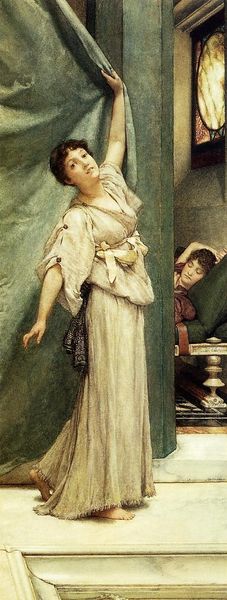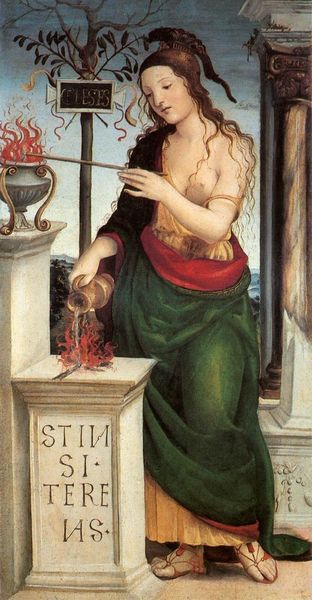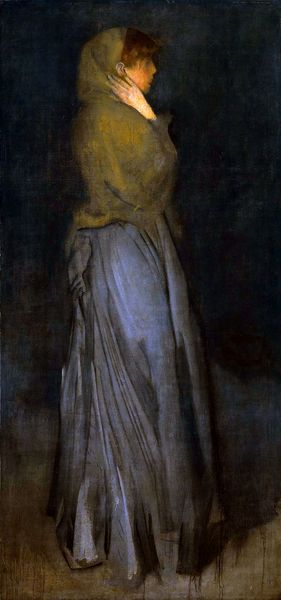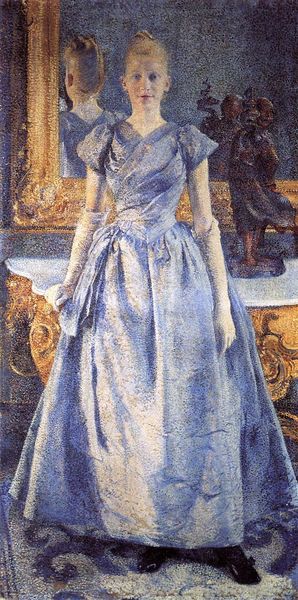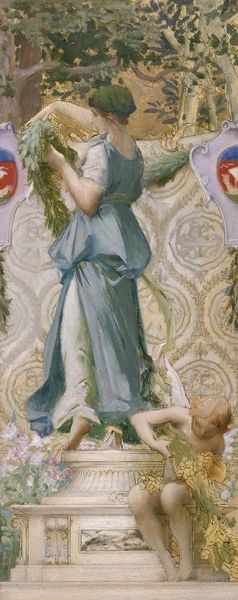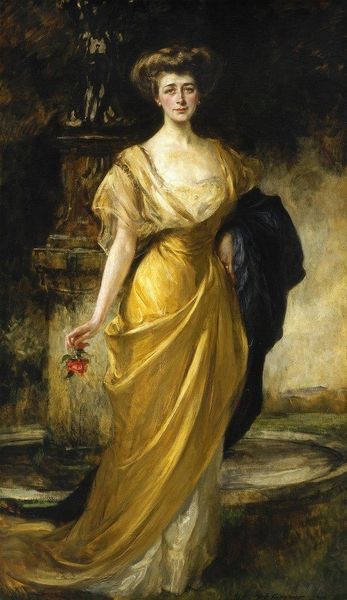
Dimensions: 65.7 x 30.4 cm
Copyright: Public domain
Curator: What a poignant scene. This is "Cinderella" by Edward Burne-Jones, created in 1863. He used oil paint to depict a reflective moment from the well-known fairy tale. It's currently part of the collection here at the MFA in Boston. Editor: It hits me with this strange feeling of resignation. She looks like she's not waiting for a prince at all, just quietly enduring…like a heavy sigh translated onto canvas. Curator: It’s interesting that you say that. Burne-Jones and the Pre-Raphaelites were often critiqued, or praised, for depicting women as aesthetic figures removed from everyday concerns. But this Cinderella isn’t merely ornamental. Her placement in the domestic space of the kitchen really does speak to a certain societal constraint placed on women. Editor: Exactly! It’s as if the story is not about transformation and hope, but more about a weary acceptance of her domestic situation. And look at the almost claustrophobic space! She's framed by this intense blue of the plates behind her; it's both beautiful and subtly oppressive, wouldn’t you agree? Curator: I do. And consider how Burne-Jones uses colour and light. Her gown seems to blend in with her surrounding environment, suggesting a life defined by her surroundings. The little details really emphasise a narrative about her working station and lack of status within the hierarchy of the period’s society. Editor: It is all very clever how these painters could embed hidden messages through small details. Even the slip, I think we can see one here, she has it peeking through her dress to emphasize this social station point you make, her hand elegantly yet deliberately placed holding it and emphasizing it's presence. It feels almost rebellious! Curator: That’s a wonderful observation. Her subtle acts of rebellion can then resonate in the overall visual statement that we see when viewing this painting here today. These pieces do still challenge contemporary dialogues on femininity and social standings in current society, to a surprising extent. Editor: It truly does bring depth to a seemingly simple fairy tale portrait. I think it opens doors for many meaningful readings and dialogues around not just fairytale stories, but many more significant and impactful subjects, which is one reason it stands so strongly still today.
Comments
No comments
Be the first to comment and join the conversation on the ultimate creative platform.
